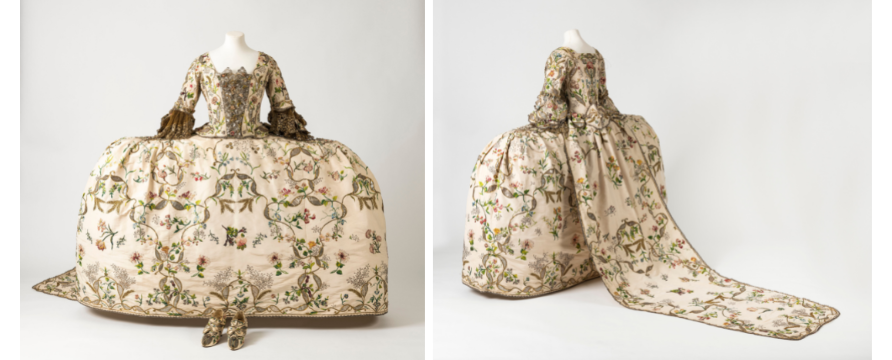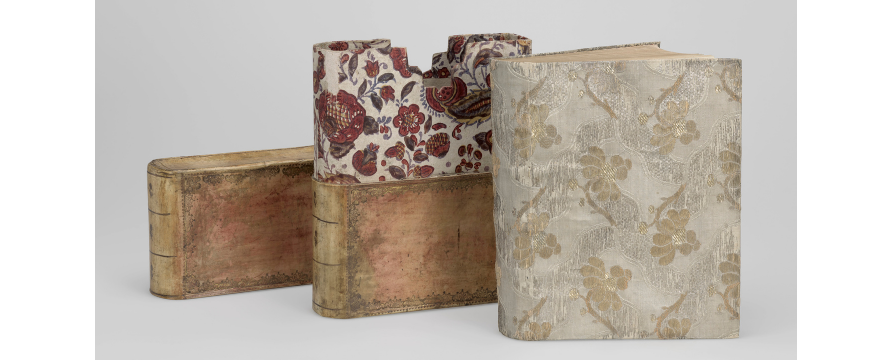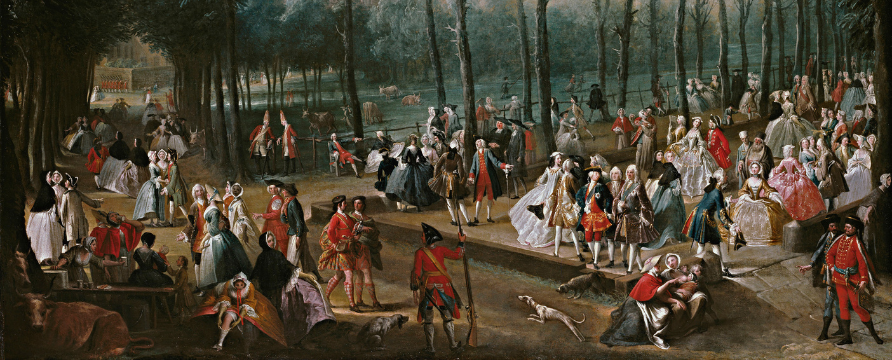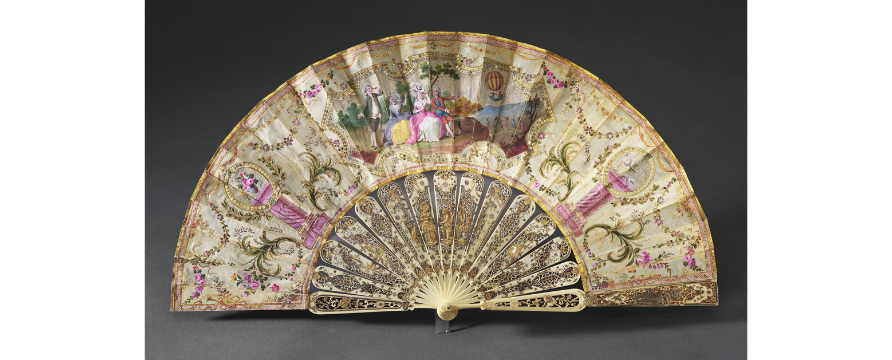
© Fashion Museum Bath
This spring, a major exhibition at The Queen’s Gallery, Buckingham Palace will reveal life in the 18th century through the fashions of the day. This was an exciting period when trade, entertainment and technological innovations became driving forces for iconic fashion trends across all levels of society.
Style & Society: Dressing the Georgians will bring together over 200 works from the Royal Collection, including paintings, prints and drawings by artists such as Gainsborough, Zoffany and Hogarth, as well as rare surviving examples of clothing and accessories. The exhibition will build up a layer-by-layer picture of what the Georgians wore – from the practical dress of laundry maids to the glittering gowns worn at court – and chart the transformation of clothing and silhouettes from the accession of George I in 1714 to the death of George IV in 1830.
At the heart of the exhibition will be a rarely displayed, full-length portrait of Queen Charlotte by Thomas Gainsborough (c.1781), which usually hangs in the White Drawing Room at Windsor Castle. Painted by candlelight, it depicts the Queen in a magnificent gown, worn over a wide hoop and covered with gold spangles and tassels. The painting will be shown alongside a beautifully preserved gown of a similar style, worn at Queen Charlotte’s court in the 1760s, on loan from the Fashion Museum Bath.

Royal Collection Trust / © His Majesty King Charles III 2023
On display for the first time will be Queen Charlotte’s book of psalms, covered in the only silk fabric known to survive from one of her dresses. The expensive fabric, decorated with metal threads to glimmer in candlelight, was most likely repurposed after the dress had passed out of fashion. As textiles were highly prized, Georgian clothing was constantly recycled, even by the royal family, and there was a thriving market for second-hand clothes.
While court dress provided a brilliant spectacle, it was on the streets of Georgian Britain that a fashion revolution was underway. As court styles became increasingly outdated, new forums for fashionable display emerged, including pleasure gardens, coffee houses and theatres. The painting St James’s Park and the Mall (British School, c.1745) brings to life the hustle and bustle of 18th-century London’s most fashionable meeting place and provides a fascinating snapshot of Georgian society, from Frederick, Prince of Wales and his lavishly dressed companions to soldiers, sailors and working-class serving women.

Royal Collection Trust / © His Majesty King Charles III 2023
Britain dramatically expanded its global reach during the 18th century via trade, travel and empire. Styles and fabrics from the Ottoman Empire, India and China were incorporated into everyday dress. In a portrait of Madame de Pompadour, Louis XV’s stylish mistress wears a floral gown, possibly made of painted silk imported from China. The portrait will be shown alongside a roll of Chinese hand-painted silk from the 1760s covered with an almost identical pattern, on loan from The Bowes Museum, Barnard Castle.
As well as influences from abroad, fashionable society increasingly looked to the lower classes for style inspiration, adopting previously working-class garments such as aprons and trousers. Knee breeches were worn by men for most of the 18th century; examples on display will include those depicted in Thomas Gainsborough’s portrait of the famed musician, Johann Christian Fischer, and a red silk-velvet court suit from the 1760s, remarkably like that worn by Fischer, loaned by the Fashion Museum Bath. However, by the end of the Georgian period, upper-class men adopted trousers for the first time, a legacy continued today. The future George IV and Lord Byron were early adopters of the new style, as shown in a portrait of Lord Byron by George Sanders.
The exaggerated fashions of the period were a gift for caricaturists, coinciding with what has become known as the golden age of the satirical print. In the never-before-displayed New Invented Elastic Breeches (1784), Thomas Rowlandson depicts a large man being manhandled into an optimistically small pair of leather breeches by two tailors.

Royal Collection Trust / © His Majesty King Charles III 2023.
The exhibition will include items of jewellery from Queen Charlotte’s famed collection, such as a diamond ring featuring a miniature of her husband George III, given to her on her wedding day. Other accessories on display will include beautiful English and French fans, which reached their fashionable zenith during this period, some representing topical events such as the first hot air balloon flight, and jewel-encrusted snuffboxes, reflecting the craze amongst both men and women for taking snuff throughout the 18th century. Advancements in haircare, cosmetics, eyewear and dentistry will also be explored. Immensely tall and wide hairstyles became fashionable for women in the latter half of the century, resulting in the development of an entirely new trade: the hairdresser. Quirky items on display will include a set of miniature bellows and a sprinkler used for applying hair powder, loaned by The School of Historical Dress.
Visitors will learn how the Georgians ushered in many of the cultural trends we know today, including the first stylists and influencers, the birth of a specialised fashion press and the development of shopping as a leisure activity. From the popularity of fancy-dress and the evolution of childrenswear, to the introduction of military uniforms and the role of clothing in showing support for revolutions at home and abroad, Style & Society will explore what clothing can tell us about all areas of life in the rapidly changing world of 18th-century Britain.
Anna Reynolds, curator of Style & Society: Dressing the Georgians, said, “During this period, we start to see court dress lagging behind street style, with people from across a much broader social spectrum than ever before setting fashion trends. The Royal Collection is so rich in visual representations from this period and the exhibition is a wonderful opportunity to share them with the public. Showing paintings alongside surviving items of dress really adds an extra layer of insight, helping us to understand how clothing was constructed, what it felt like to wear, and how artists approached the challenge of representing Georgian fashion in paint.”
The exhibition will be open to the public from 21 April 2023 until 8 October 2023.
Click here to learn more about Royal Collection Trust.








